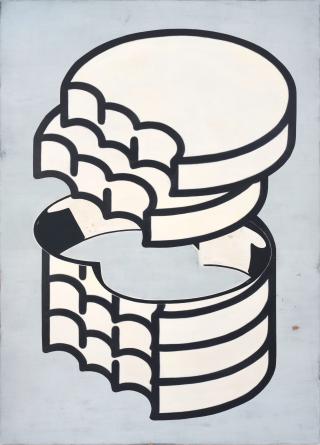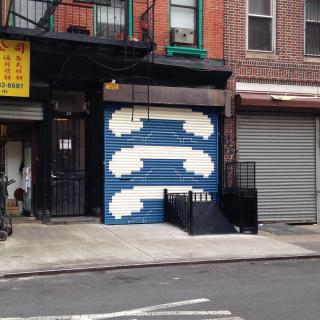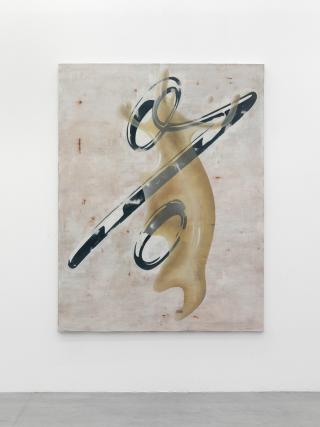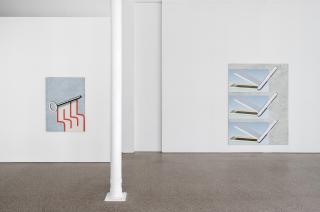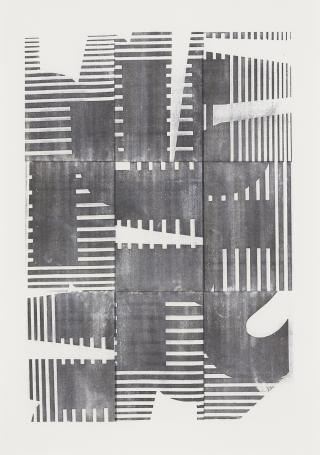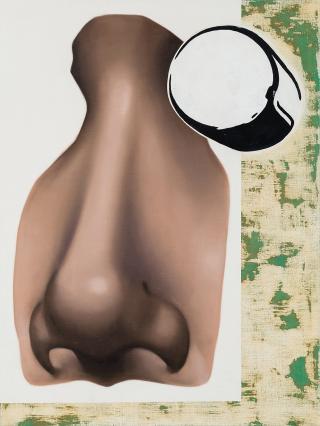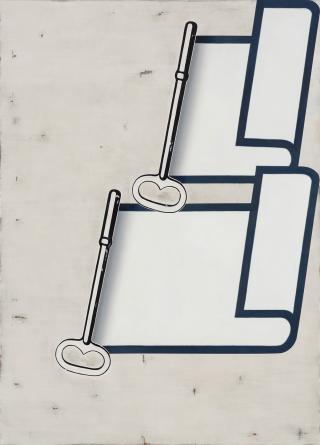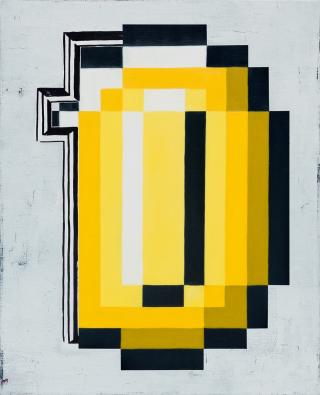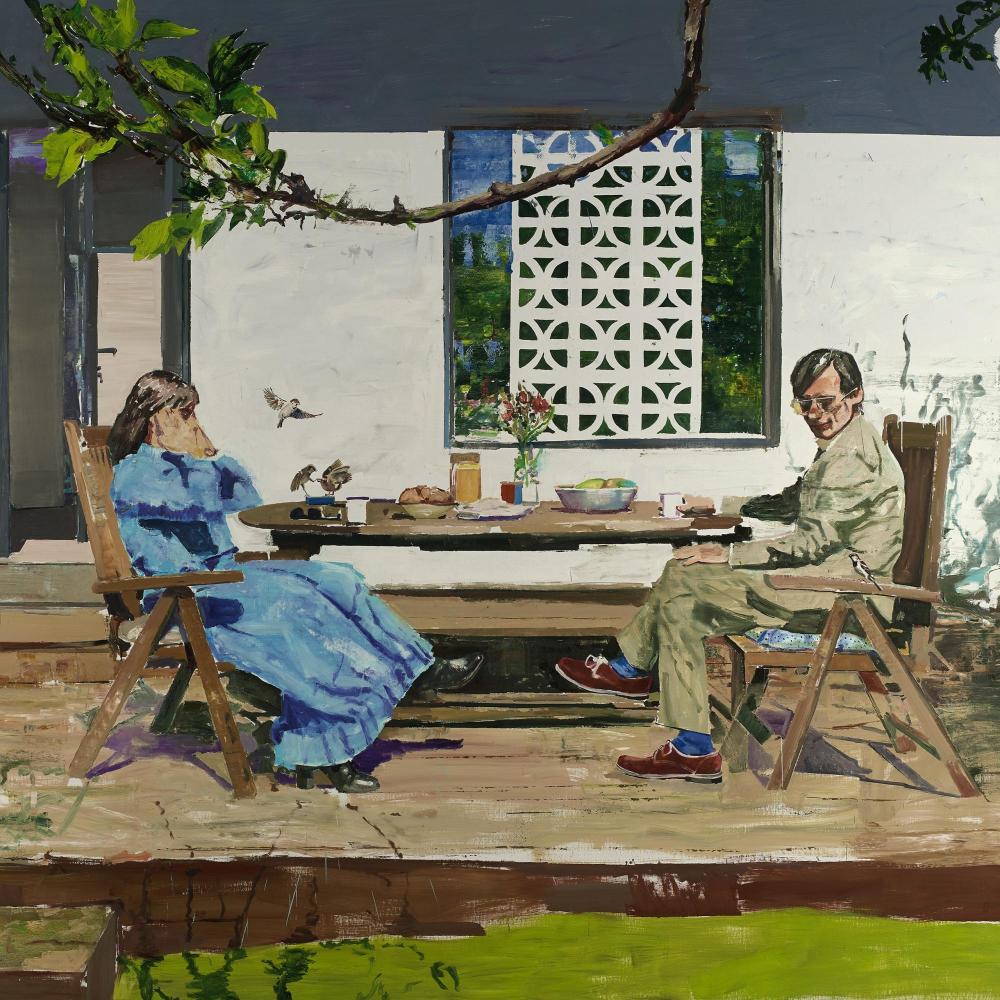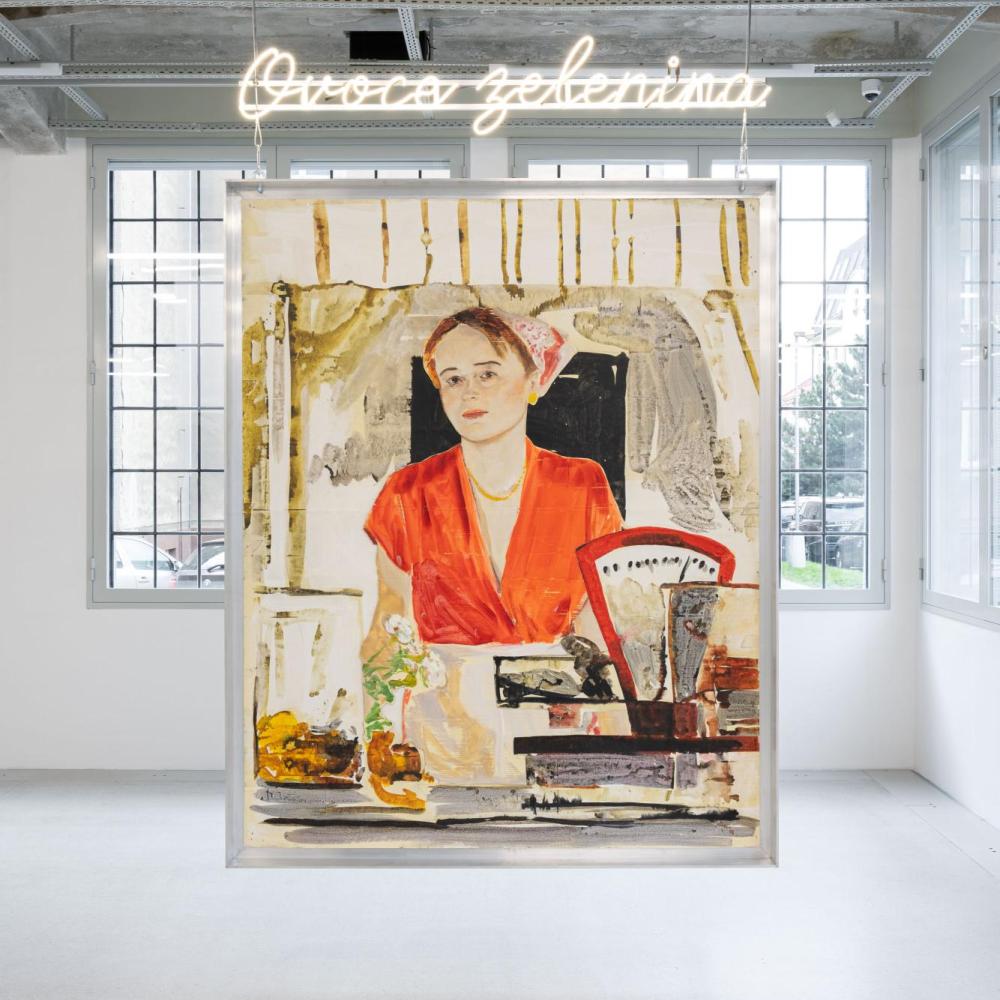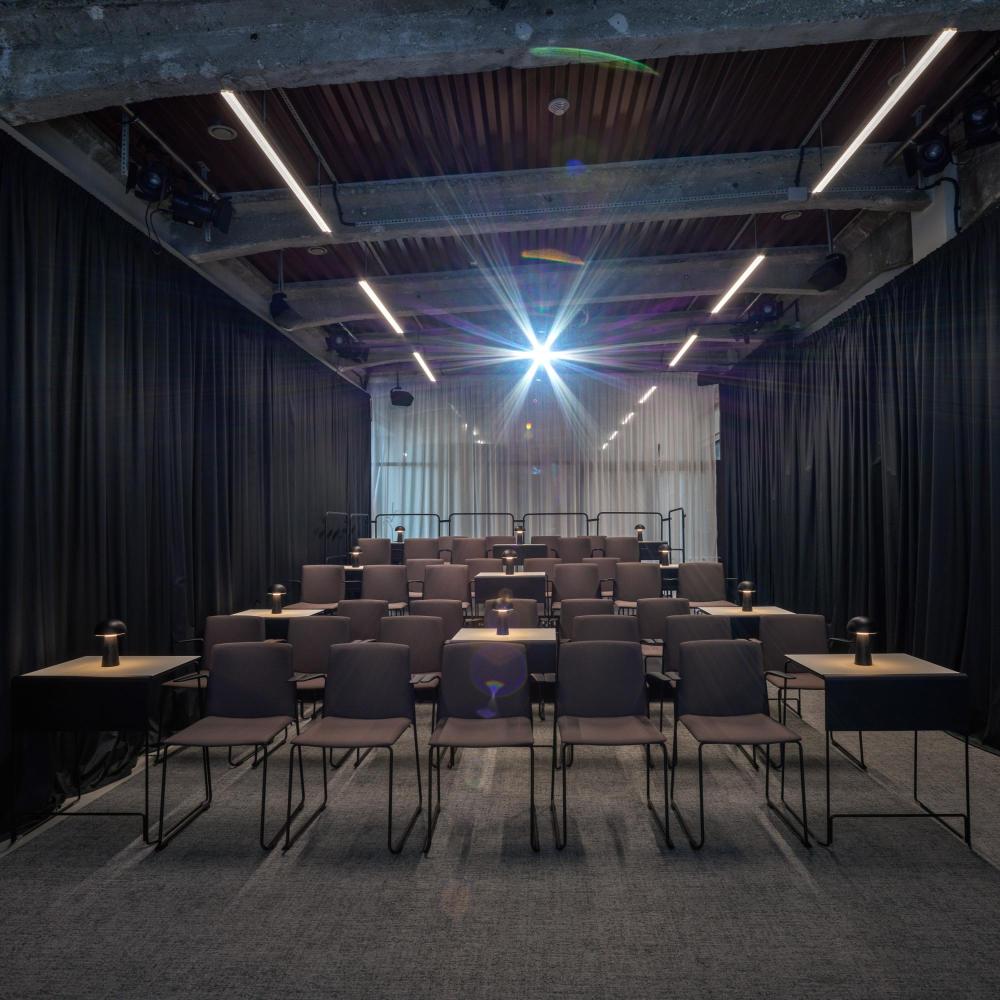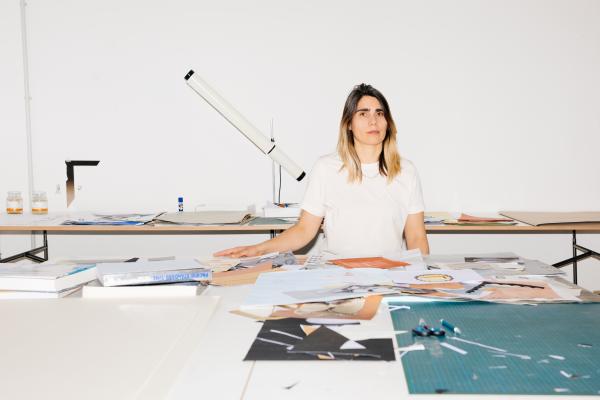
The interview was conducted on the occasion of the group exhibition Brave World at the Telegraph Gallery. The exhibition is curated by Tevž Logar and conceptualized by Gregor Podnar. Interviews with the artists were conducted by art historian Barbora Kundračíková, who works at the Department of Art History at Palacký University and the Olomouc Museum of Art-SEFO.
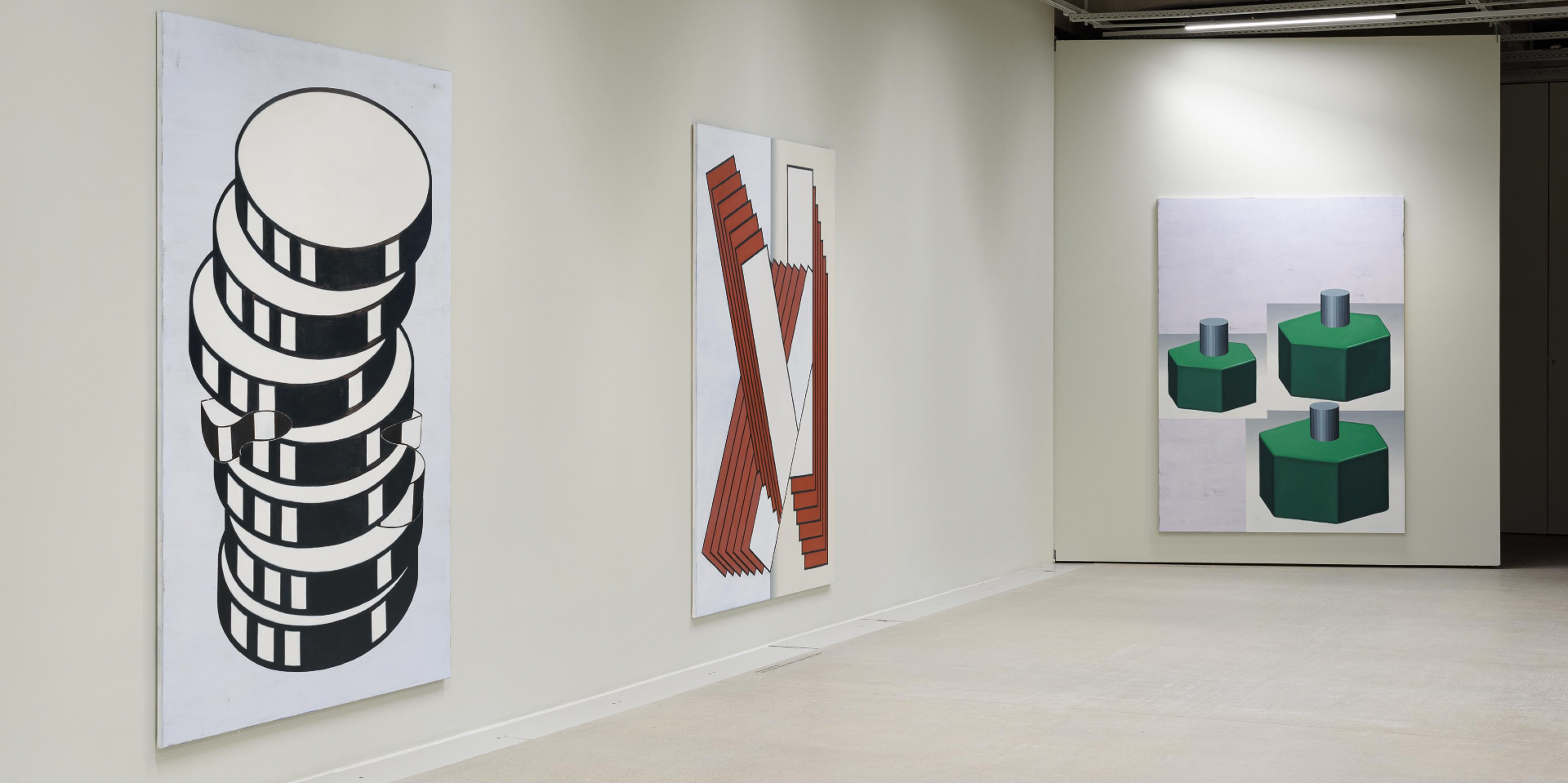
One of the elements of your work that I find interesting is this constant change of spectrum and attention – macro contra micro scale, whole contra detail, image flatness contra painterly quality, and vice versa. Is this, do you think, what establishes contemporary visuality? Constant flux and re-establishing of the field?
I think attention is a good term here. Not only do we have to constantly switch back and forth between different image formats and content, but today's technology also makes it possible for everything to happen visually at the same time, and more importantly, on the same level. So, images naturally must fight for attention.
As your colleagues included in the exhibition, you adopt a specific media – painting, the most classical of them all. What does it mean to you? What do you think about it? How do you use it?
Painting has its own temporality, diametrically opposed to the world of contemporary images, which is characterized by velocity and efficiency, and in which we have much to do with pictures produced by mass media. In relation to this, one could think that painting has a certain anachronism – due to its slowness, sensuality, and very specific material conditions. These are the challenges of painting but at the same time its power. In terms of mechanisms of representation, images from contemporary visual communication reveal analogies to very classical themes of painting, such as perspective, abstraction, representation, staggering of image spaces, a suggestion of three-dimensionality, and so on.
But they are nevertheless of a completely different nature, and that interests me. When I paint a 3D-modeled object, for example, a key, that I have used many times, it means something completely different than painting a key after a real key that has a real volume and may even be used to open a door. The digital image of a key is just calculated and the physical and mental space it is supposed to open is a pure projection and almost absurd.
I would say that illusion plays a vital part here – am I right? Illusion is the most natural introduction into the realm of recognition, understanding, identification, or communication – but also confusion. The latter strikes me as the point you're making, in fact.
Thanks to our viewing habits, an illusionistic element makes the eye believe the most illogical situations; a painted shadow might be perceived as a “real” spatial element, and we believe it, even if it is not possible in the place where it is used. In my paintings, shadows are often used in this twisted way, so that elements that are usually flat are given a suggestion of depth, and conversely, three-dimensional elements are sometimes rendered flat.I like to play with this deception and the state of confusion that evolves from it, to keep the gaze in motion – questioning visual habits and certain visual codes with which today's images operate.
You are often working with the visual attributes and characteristics of our daily life and using them as icons. As such they are things about themselves but also work as some sort of the nodal point of our memory. Are you interested in the social and political aspects of art?
My approach to this imagery is rather phenomenological than politically or socially motivated. Art always has a social or political aspect, but I think that lies primarily in the fact that it cannot be harnessed to any social or political message. I rather believe in its subversive potential.
I expect that the ambiguity felt by the viewer is somehow mirrored by your own uncertainty – in a good sense, though. What does it mean? Why this connection? Is it a metaphor? Or some code? Is there any “correct reading” of your work?
No, there is no “correct reading”. I guess it is even not at all about getting out a message in the end. It is an activated state of contemplation that somehow rests in an “in-between” – a place where things could potentially flip into any direction that I am interested in. While using these details of implied elements, I like to reach a situation where the clearly recognizable gets kind of taken ad absurdum, towards uncertainty that eventually keeps the viewer activated, questioning, and looking.
And that brings me to a potential or wanted emotional reaction – a kind of disorientation that evokes, I feel, melancholy or even nostalgia. Are you reflecting on your own experience here? I know you studied in Dresden only about ten years after the unification.
Not sure it is about nostalgia. Maybe about the fact that there are always several ways to look at a thing, even if it seems quite definite. During my time in Dresden, I sometimes encountered big differences in the way we communicated, even when we spoke the same language. Everything was said much more between the lines back then. Above all, these differences in the way we interact and communicate made me realize how a system, be it socialist, capitalist, or any other, affects our communication. And that a system you live in, which you may take for granted, can change.
Anne Neukamp (*1976) is a German visual artist. She was born in Düsseldorf and currently lives and works in Berlin. She started her studies at the Hamburg University of Fine Arts, then received her Master's degree at the Academy of Fine Arts in Dresden, where she has been a professor of painting since 2020.
Through the small details of everyday objects, Neukamp refers to human existence. The simplicity of the subject is underlined by the simplicity of the form itself. Largely traditional mediums such as oil, acrylic, tempera on canvas combined with a subtle range of colours provide the viewer with a sense of security. She places global issues in the background with the subtle banality of everydayness. Sometimes on the verge with abstraction, Anne Neukamp's work is the result of the artist's consistent attention to the expression of form, line and surface.
Photo portrait:: Nora Heinisch
Photo of the installation: Matěj Doležel
Anne Neukamp
Foto: Archiv autora, Gregory Coipitet, Marcus Schneider, Hugard&Vanoverschelde, Roman März, Johannes Bendzulla, Marlene Burz
